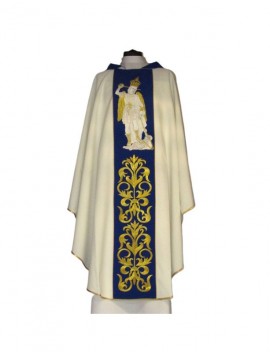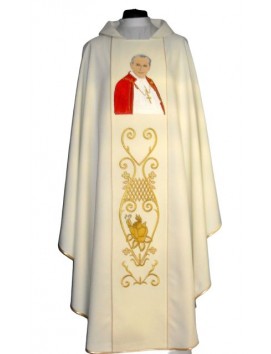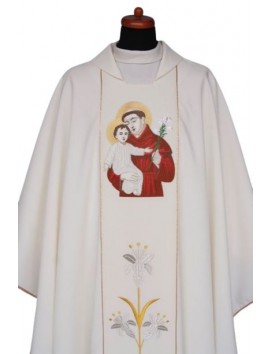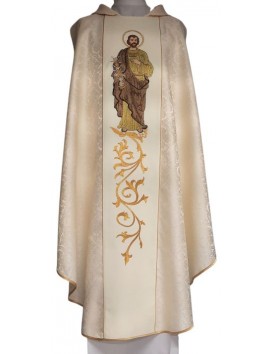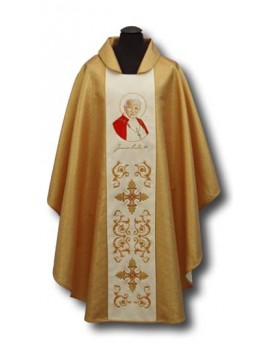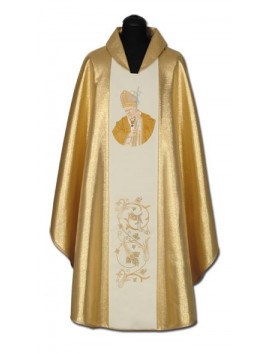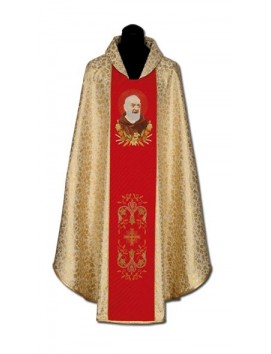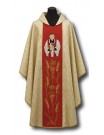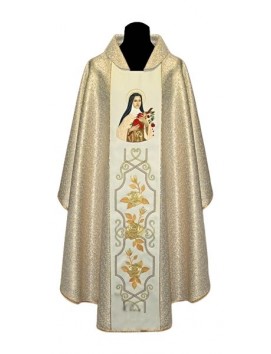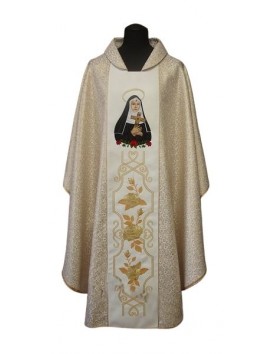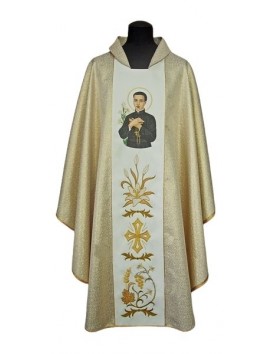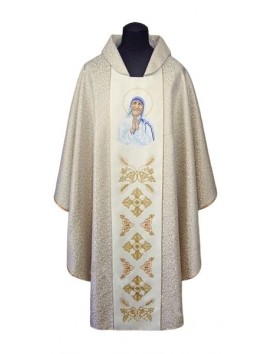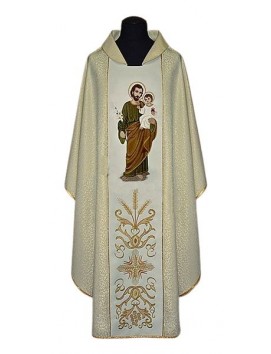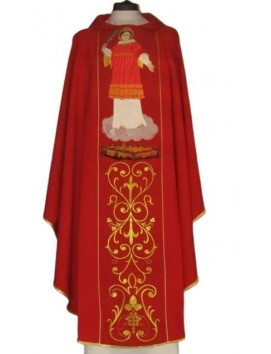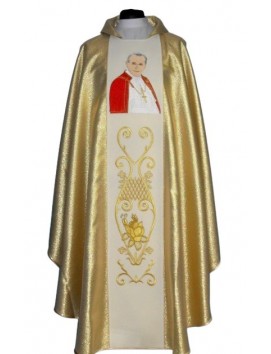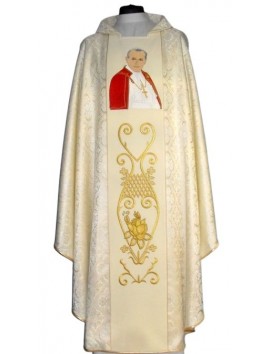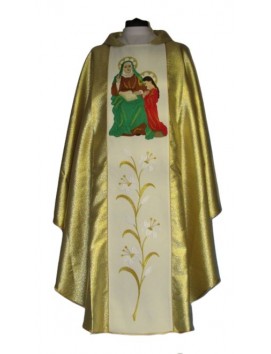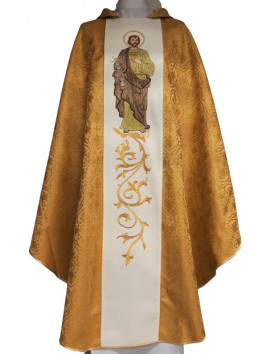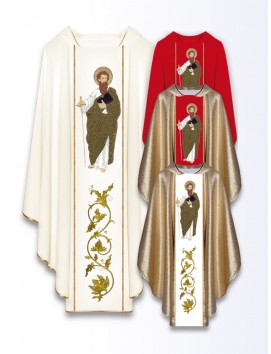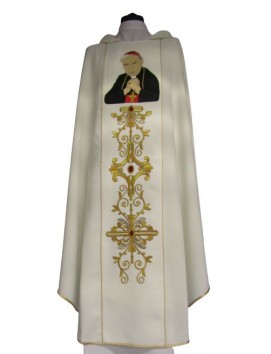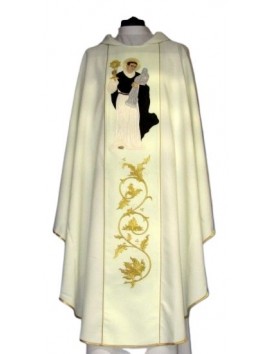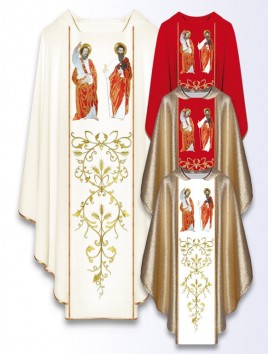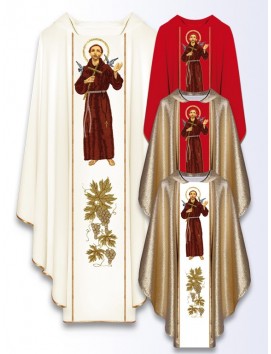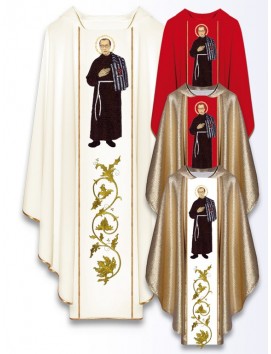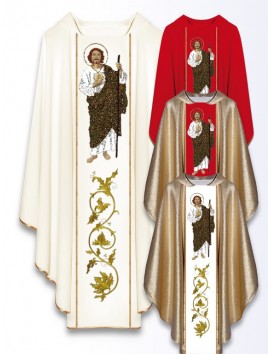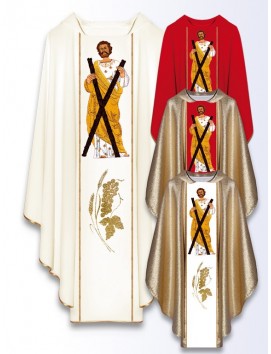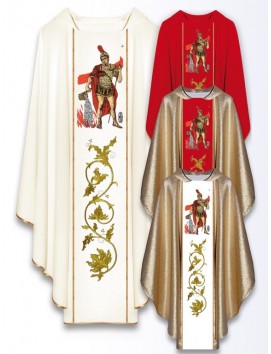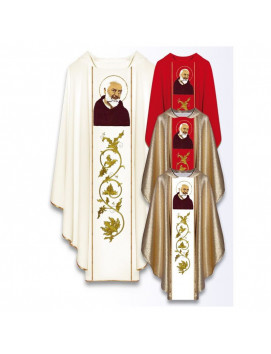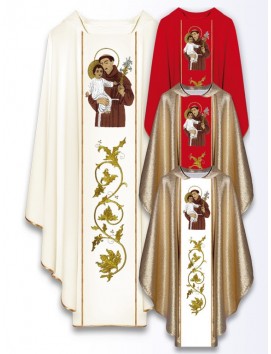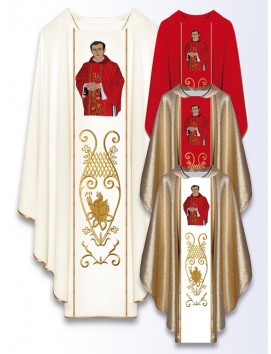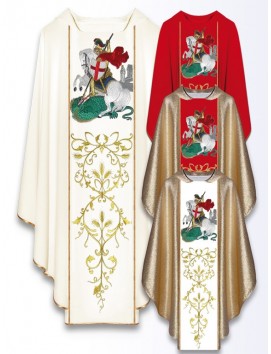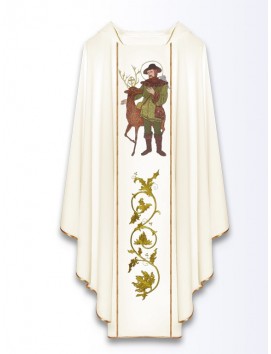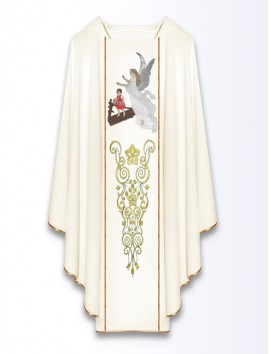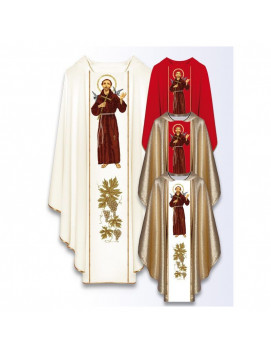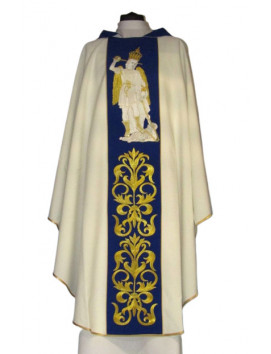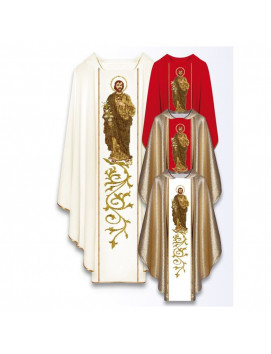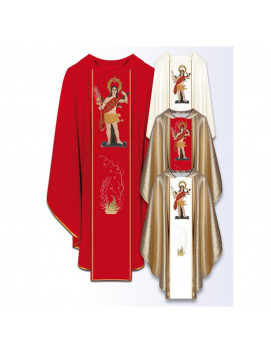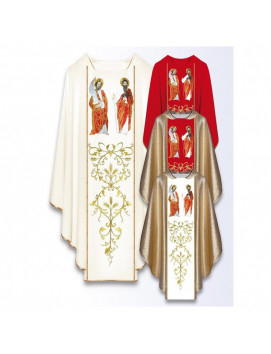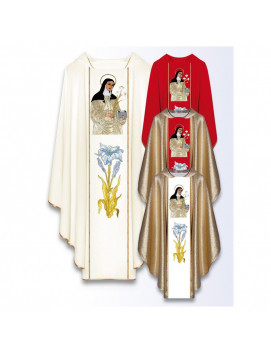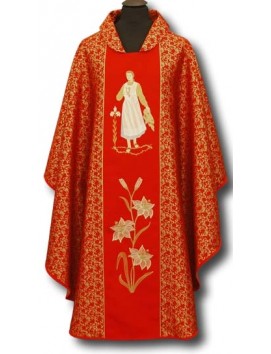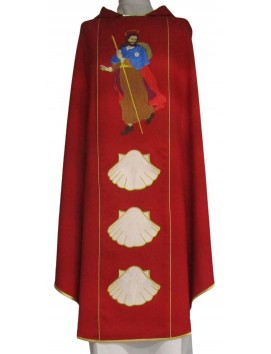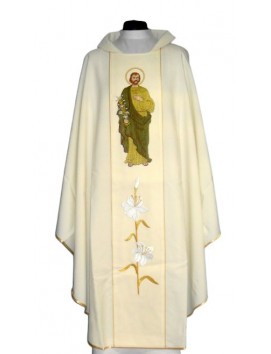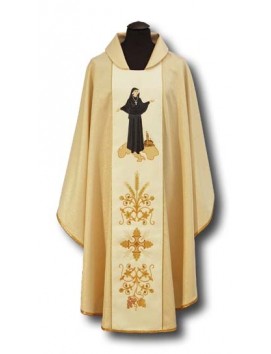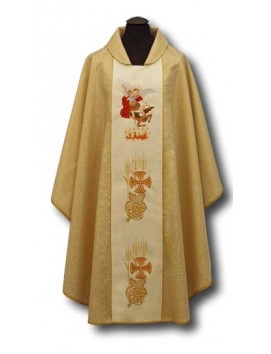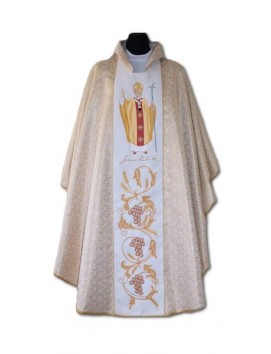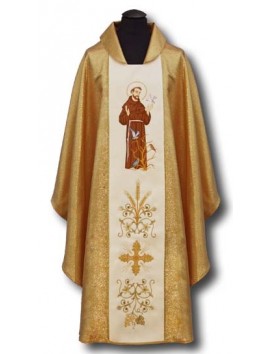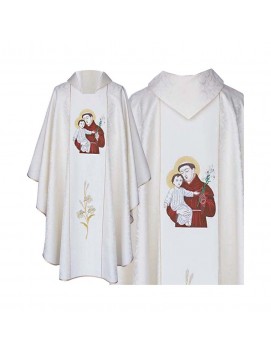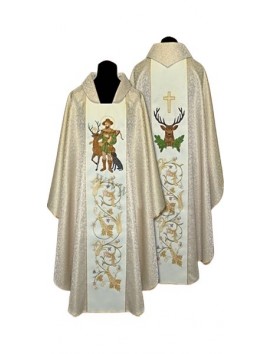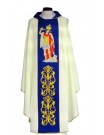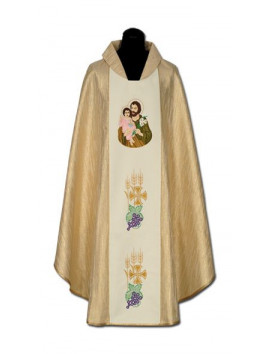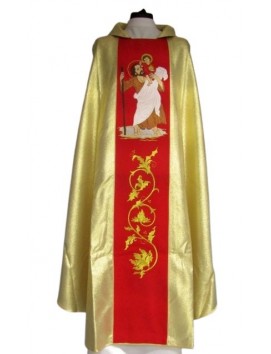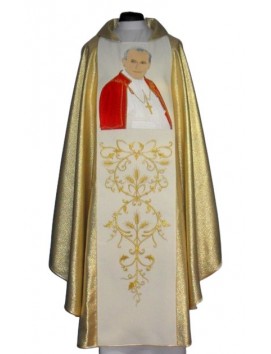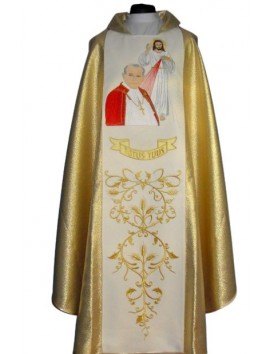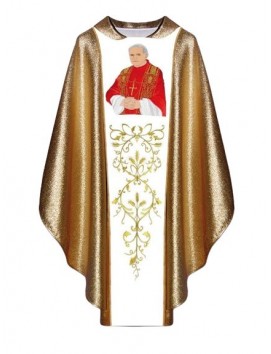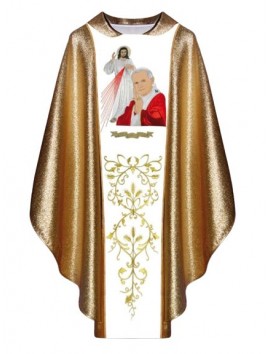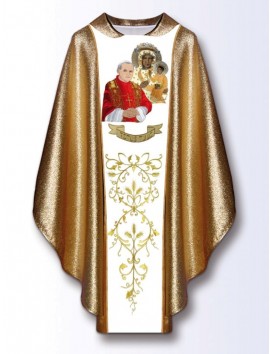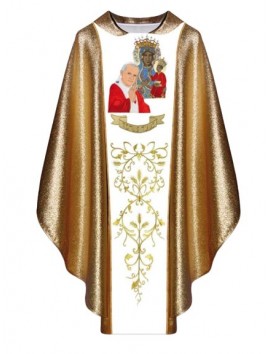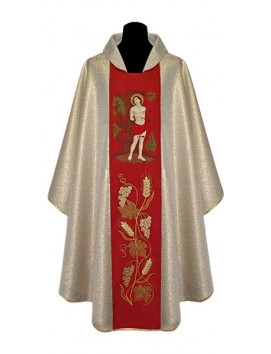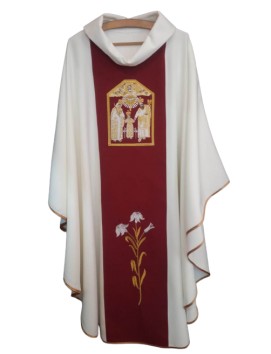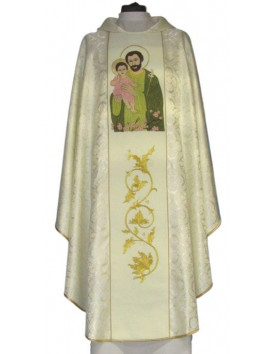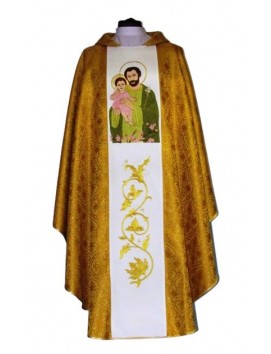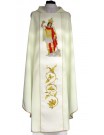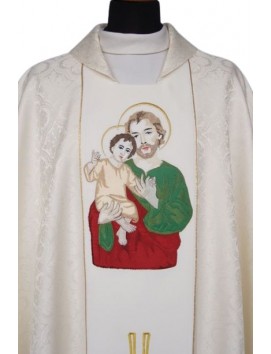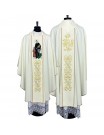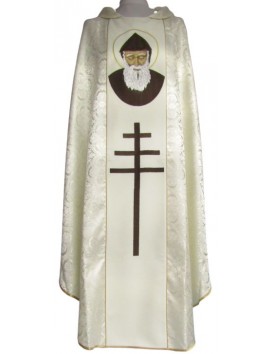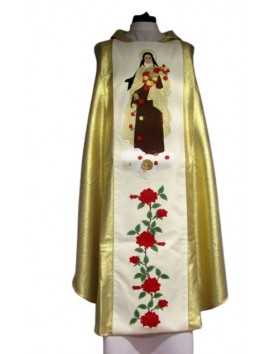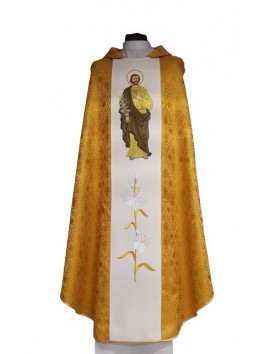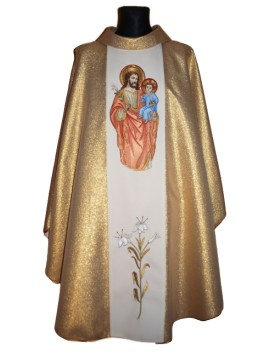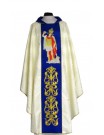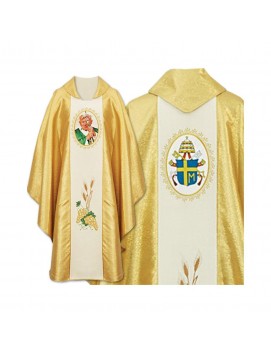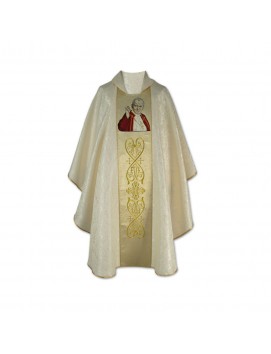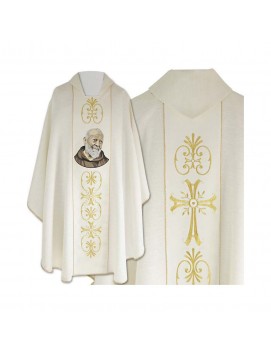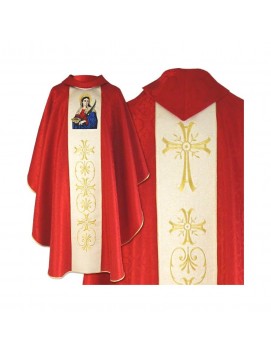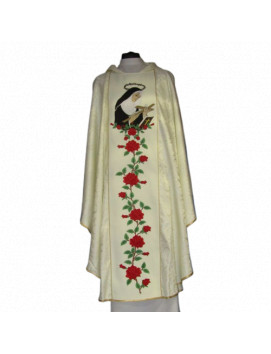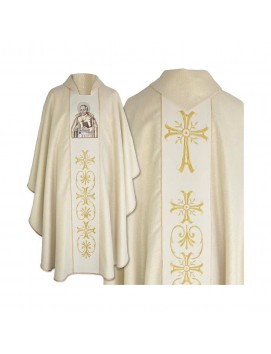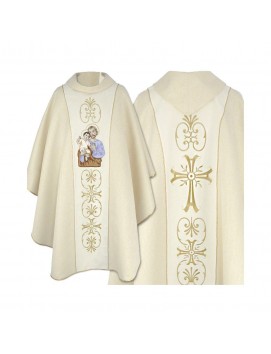No products
Chasuble with saints
Chasuble is the outermost liturgical vestment worn by clergy for the celebration of the Eucharist in Western-tradition Christian churches that use full vestments, primarily in Roman Catholic, Anglican, and Lutheran churches. Chasubles with Saints are chasubles that have embroidered applications of Saint Mary or some of the Saints on them. These chasubles represent the most important figures for the Christian religion, such as Christ the King, Archangel Raphael, St. Joseph, St. Thérèse of Lisieux, Saint Peter, Pope John Paul II, or Saint Vincent Pallotti. The chasuble is described in prayer as the "yoke of Christ" and said to represent the cross that Jesus carried. The chasuble was never used by low-church Anglicans and rarely used by high-church Anglicans until the Oxford Movement in the 19th century, and even then, not until the second generation of the Oxford Movement. It is not customary and rarely seen in Protestantism outside the liturgical churches.
Chasuble is the outermost liturgical vestment worn by clergy for the celebration of the Eucharist in Western-tradition Christian churches that use full vestments, primarily in Roman Catholic, Anglican, and Lutheran churches. Chasubles with Saints are chasubles that have embroidered applications of Saint Mary or some of the Saints on them. These chasubles represent the most important figures for the Christian religion, such as Christ the King, Archangel Raphael, St. Joseph, St. Thérèse of Lisieux, Saint Peter, Pope John Paul II, or Saint Vincent Pallotti. The chasuble is described in prayer as the "yoke of Christ" and said to represent the cross that Jesus carried. The chasuble was never used by low-church Anglicans and rarely used by high-church Anglicans until the Oxford Movement in the 19th century, and even then, not until the second generation of the Oxford Movement. It is not customary and rarely seen in Protestantism outside the liturgical churches.
Understanding the Chasuble with Saints
The chasuble with saints is a fascinating and deeply symbolic garment worn by clergy during the celebration of the Eucharist in the Christian tradition. This outermost liturgical vestment not only serves a ceremonial purpose but also acts as a canvas for religious expression and storytelling. Let's delve into the rich history and significance of this sacred attire.
The Historical Evolution of the Chasuble
Originally, the chasuble was a simple, poncho-like garment known as the 'casula' or 'little house' in Latin, providing protection from the elements during the late Roman Empire. Over time, as fashion trends evolved, the chasuble transitioned from everyday wear to a garment reserved for clergy, becoming more ornate and symbolic.
By the 13th century, the chasuble began to be adorned with intricate decorations reflecting its sacred function. The garment's design was modified for practicality, allowing priests to perform liturgical duties with greater ease. This led to the development of different styles, such as the "fiddleback" chasuble, characterized by its reduced size and elaborate embroidery.
Symbolism and Current Usage
The chasuble is rich in symbolism. It represents the "yoke of Christ," reminding the priest of his role as 'another Christ' during the Mass. It also evokes the "seamless garment" worn by Christ, further linking the priest to the sacrifice of Jesus on the cross. Today, the chasuble often features simple symbols or bands and is designed to reach almost to the ankles and wrists, reflecting a return to a more traditional form.
Chasubles with Saints: A Tapestry of Faith
Chasubles with saints are adorned with images of revered figures in Christianity. These hand-embroidered vestments showcase saints such as the Virgin Mary, St. Joseph, St. Teresa, and many others. Each image is crafted with care, often using rich materials like silk, gold, and brocade, turning the chasuble into a wearable piece of art that tells a story of faith and devotion.
The Significance of Saints on Chasubles
The depiction of saints on chasubles serves multiple purposes. It honors the saints' lives and legacies, inspires the faithful, and educates about the virtues and history of Christianity. The images act as visual sermons, conveying messages of holiness and encouraging believers to emulate the saints' exemplary lives.
FAQs: Chasuble with Saints
What is the purpose of depicting saints on chasubles?
Depicting saints on chasubles serves to honor their contributions to the faith, inspire the congregation, and provide a visual representation of Christian history and values.
How are chasubles with saints made?
Chasubles with saints are often hand-embroidered using high-quality materials like silk and gold thread. The images are carefully crafted to ensure they are both beautiful and meaningful.
Can chasubles with saints be customized?
Yes, many vestment makers offer the option to customize chasubles with specific saints or symbols that hold particular significance for a parish or priest.
Are there different styles of chasubles with saints?
Yes, there are various styles, including Gothic and Roman chasubles, each with its own design elements and types of embroidery.
When are chasubles with saints worn?
Chasubles with saints are typically worn during the Eucharist, especially on feast days or celebrations associated with the depicted saint.
In conclusion, the chasuble with saints is not just a garment but a profound expression of faith and tradition. It connects the past with the present, weaving the stories of saints into the fabric of contemporary worship. Through its evolution, symbolism, and artistry, the chasuble continues to be a central element of liturgical life, inspiring both clergy and laity alike.

